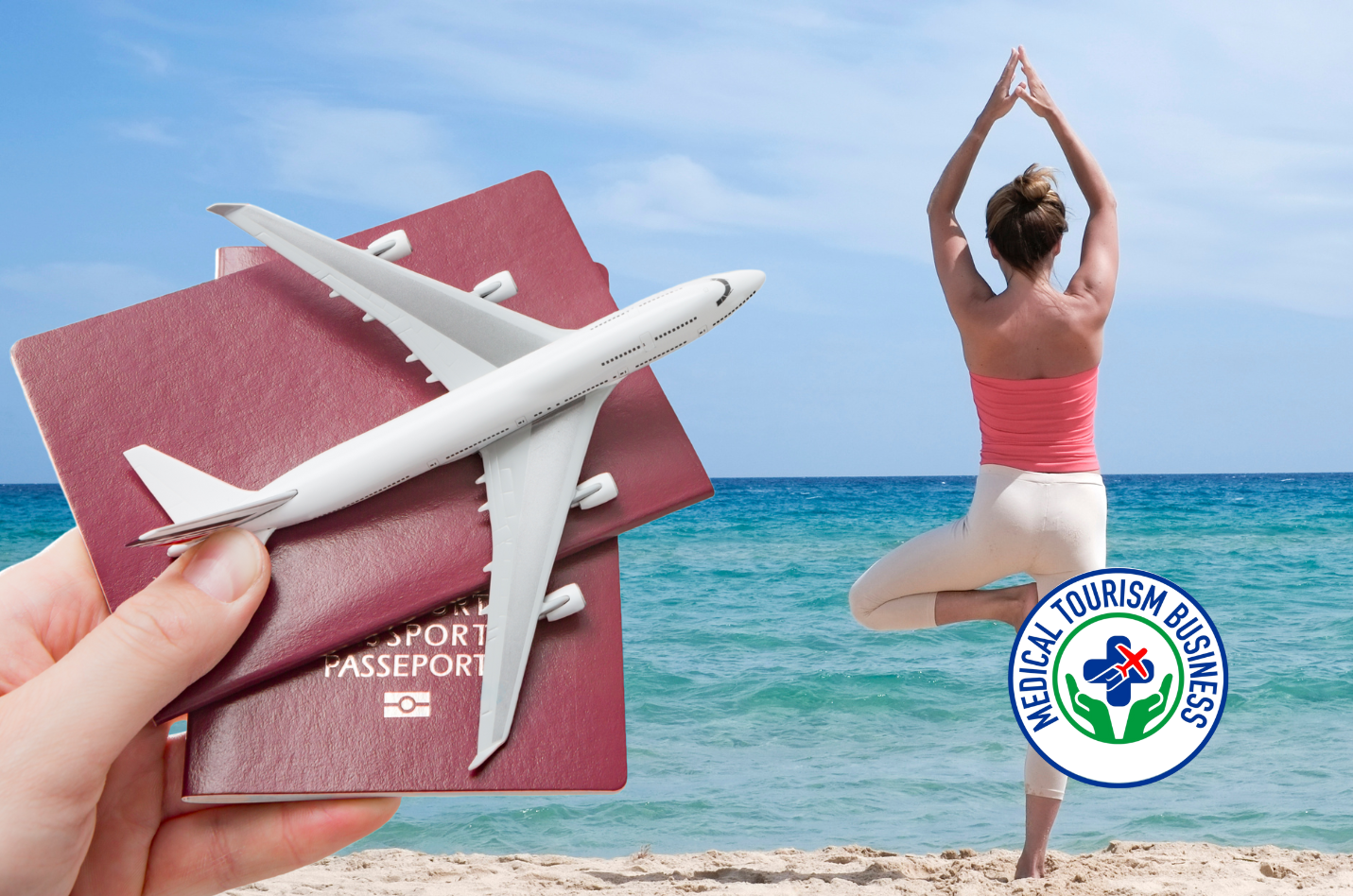What is Wellness Tourism?
Wellness tourism is when people travel to improve their health and well-being. It’s different from regular tourism because it focuses on activities that help you feel better, like yoga or visiting a spa.
With travel often causing stress and unhealthy habits, wellness vacations are a way to counter these issues and make trips healthier. This part of the travel industry is growing fast, with wellness tourism expected to reach $8.5 trillion by 2027.
Wellness vs. Health Tourism
Sometimes, people confuse wellness tourism with medical tourism because they both involve health-related travel. However, they’re not the same thing.
Medical tourism is when people travel for medical treatments, like surgeries or dental care. Wellness tourism, on the other hand, is about doing activities that help you stay healthy, like fitness programs, meditation, or relaxing spa treatments.
Think of health on a scale: one end is medical treatments for sickness, and the other is wellness, which is about staying healthy and feeling good through regular activities.
The Rise of Self-Care
In recent years, more and more people have made self-care a big part of their lives. Around 82% of people in the U.S. say wellness is now a top priority for them.
Self-care activities like meditation, breathing exercises, and using hot and cold therapy are becoming more popular as people try to reduce stress and feel better overall.
Who Are Wellness Travelers?
Wellness travelers are not just wealthy people who go to luxury spas. The group is actually quite diverse and includes anyone who wants to focus on their health while traveling. There are two types of wellness travelers:
- Primary wellness travelers: These people plan their trip mainly for health and wellness.
- Secondary wellness travelers: These travelers focus on maintaining their wellness routine while traveling, whether for work or fun.
As wellness tourism grows, more people are traveling for health, not just luxury.
Young People and Wellness
Younger generations, especially Gen Z and Millennials, are spending more on wellness. They are also more focused on health and wellness than older generations. This shift is changing what people expect from wellness tourism, with many younger travelers wanting digital wellness tools, like apps and health tracking devices.
Growing Areas of Wellness
Three areas of wellness are growing the fastest:
- Wellness Real Estate: Buildings designed to promote health and well-being, like offices and homes with wellness features.
- Mental Wellness: Products and services that help with mental health, such as meditation tools and stress-relief technology.
- Wellness Tourism: More hotels, resorts, and airports offering wellness services like fitness programs and health-focused meals.
Key Trends in Wellness Tourism
Wellness tourism is growing rapidly because more people are aware of the importance of health. Many travelers now want experiences that help both their body and mind.
New practices like eco-friendly hotels and locally-sourced wellness treatments are helping make wellness tourism more sustainable.
Hotels are also offering unique wellness experiences that focus on overall well-being, including mental health, yoga, and nutrition.
Meeting the Demand for Wellness
Wellness tourism is no longer just for a small group of people—it’s something everyone is looking for. Travelers now expect their destinations to offer more than just relaxation; they want experiences that help them grow and connect with nature, culture, and themselves.
Hotels that provide wellness services are not only meeting customer needs but also gaining a competitive edge. Businesses that add wellness-focused activities are also helping support the environment and their local communities.
Your Unique Wellness Offer
Wellness tourism isn’t the same everywhere. Each location offers something special based on its culture, nature, and traditions. For example:
- Finland is known for its relaxing saunas.
- California offers weight-loss and detox retreats with beautiful hikes.
- India has yoga and meditation retreats that focus on spiritual health.
No matter where you go, wellness tourism offers unique experiences that are different for every traveler.
Creating Wellness Partnerships
As wellness travel grows, hotels need to go beyond offering just basic wellness services. They are now teaming up with wellness brands to provide exclusive experiences like wellness retreats or guided hikes.
These partnerships can help hotels offer wellness services without the need for expensive in-house spas. Simple ideas like offering in-room wellness kits or working with local fitness instructors can make a big difference.
Example of a Sustainability and Wellness Offering
The Maya Boutique Hotel in Switzerland is a great example of how a hotel can combine sustainability with wellness. The hotel uses solar energy, has eco-friendly architecture, and offers wellness programs like yoga and fasting vacations.
By focusing on sustainability and wellness, the Maya Hotel appeals to travelers who care about both their health and the environment.
Reach Your Full Potential in Medical Tourism with MTB
At MTB, we are dedicated to supporting professionals and organizations in the medical tourism industry as they strive for success. We are a leading provider of certification, contracts, marketing, and support. We offer comprehensive programs, expert guidance, and valuable resources that are designed to help our members achieve their goals and reach their full potential in the global healthcare market. With a focus on excellence and innovation, we help our members stay ahead of the competition and navigate the complex and dynamic world of medical tourism.
Tel/WhatsApp: +1 (561) 909-7178








